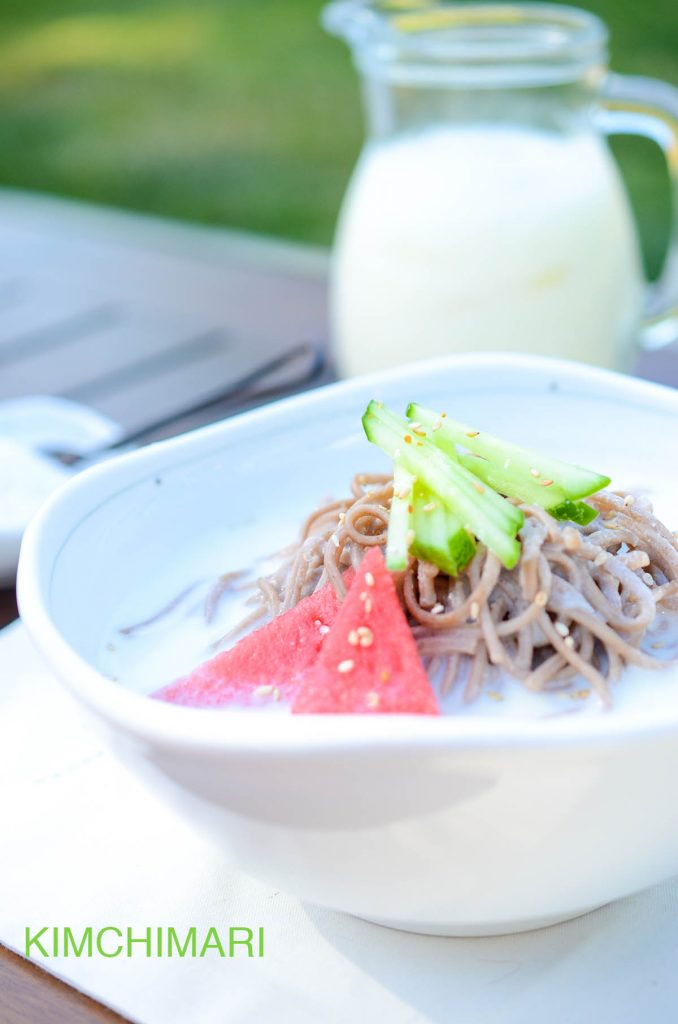
Cold Soy Milk Noodle Soup or Kongguksu(콩국수)/Kong Guksoo is one of my childhood favorite Korean foods to have in the summer. When Korean summers get really hot, even a ‘skipping meals is just NOT in my dictionary’ kind of a food lover like myself can lose her appetite. But I remember having this wonderful cold noodles in this white cold milk like liquid as a child, it was so refreshing and cooling. I remember being so full but I just could not stop drinking the yummy cold soup. The earliest record of Koreans eating Kongguksu can be found in a cookbook written in the late 1800’s that mentions noodle soups made from soybean milk and sesame seeds. So can you believe this Korean dish is over 200 years old!?!!
Growing up, I was never a big fan of soy milk that was sold at stores. But I always LOVED home made Kongguksu – noodles served in cold soy milk or broth made from soybeans. In the 70’s, the only soy milk drink in Korea was Vegemil (베지밀) which lot of people loved to drink except me. 🙂 Even though Vegemil may not be my favorite cup of soy milk, I should mention the story behind this drink. So, the story goes that a pediatrician called Dr. Chai-won Chung had seen many Korean infants and children suffer from malnutrition due to allergies to cow’s milk during the late 60’s. And some of the babies even died from malnutrition due to their severe intolerance of milk. He was deeply troubled by this but he could never figure out the cause until later when he came to US to study and learn more about his field. While studying in the US, he learned about a condition called Lactose Intolerance and that’s when he realized that many Korean infants and children suffered from this condition!
I think many Korean adults and children suffer from lactose intolerance because milk was really never a big part of the Korean diet for thousands of years and so many lack the ability to digest milk.
Excited about this new found knowledge, he returned to Korea and worked to develop a drink that lactose intolerant children could drink in lieu of milk and avoid malnutrition. Hence, Vegemil = Vegetable + Milk was born in 1973. The drink is made mostly from soybean extract and various vitamins. The company called Chung’s Foods still produce various soy milk based products today although there’s a LOT of competition in the soy milk market now. An interesting thing is that soy milk is now known as a health food in Korea, good for staying slim..as opposed to an essential survival food that many Korean children needed to drink to escape malnutrition in the 70’s. It’s pretty amazing how far Korea has come in just 40 years or so.
Home made soy milk in Korean soy milk noodle soup is NOT your regular soy milk from stores
Good. Now, back to our home made cold soybean soup or soy milk soup. Sorry, Vegemil and other soy milk companies both in Korea and US, I think my home made Kongguk tastes WAY BETTER than soy milk sold in stores. The difference is quite significant both in texture and flavor – soy milk (두유 duyu) that comes in cartons have no solids and is often artificially thickened with xantham gum (I hate that stuff) or carrageenan (used in American Silk products) and sometimes even fat is added back if the soy milk was made from defatted soy protein. Also, the soy milk sold at stores are missing the natural fiber that comes with the soybeans. Home made Kongguk (soybean soup) has all the fiber in the little tiny bits of soybeans with tons of great nutty flavor of wholesome goodness as you drink it. You just can’t beat home made Korean soy milk or soy soup (Kongguk).
BTW, if you want, you can drink this home made soy milk soup also just as a drink. Having tons of leftover soy milk after cooking for this blog post (and having a great meal of Kongguksu and Korean fried chicken wings), I diluted it with water and flavored it with some salt as a drink snack. Optionally, you can also add some sugar if you’d like. It is just so satisfyingly good.
*It is best to make the soy milk ahead of time and chill in the refrigerator for few hours before serving. If you don’t have time, you can just make a thicker soy milk (use less water) and add ice to cool it down.
Use good quality soybeans for your Cold Soy Milk Noodle Soup
*Just like corn, there are many different grades of soybeans and if you don’t have access to a Korean or Asian market to buy good quality Korean soybeans, the one you want to buy are good quality ones sold for tofu making. Laura’s soybeans is a good online place to buy non-GMO soybeans.
Here is what I bought from our local Korean market –
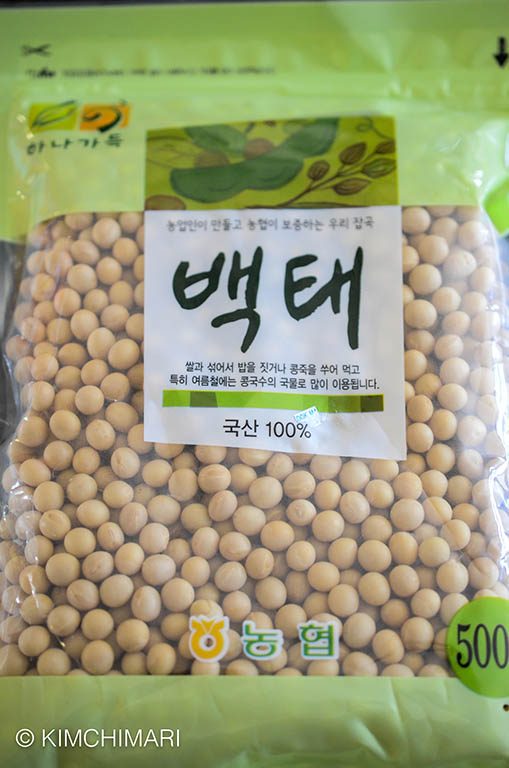
Korean Cold Soy Milk Noodle Soup (Kongguksu)
Servings: 4 Inactive Time: 3 hrs Cook Time: 15 min Difficulty: Medium
Ingredients
- 1 cup (200 g/7 oz) dry good quality soybeans (for tofu making)
- 1 package Korean wheat noodles, buckwheat noodles (don’t overcook noodles)
- 10 cups water (5 cups for boiling, 5 cups for blending)
- 1/4 cup cucumber, julienned
- 4 pieces, watermelon triangles (optional)
- sesame seeds, crushed
- sea salt
- Soak dry soybeans 3 hrs to overnight until they are fully rehydrated. If the weather is really warm, soak overnight in the fridge. 1 cup dry soybeans will be about 2 1/2 cup when fully soaked.
Korean soybeans soaking in water Soybeans fully rehydrated for soy milk for kongguksu - Rinse soybeans. Discard any soybean skins/casings that float to the top. But you can just blend the whole thing including the casings, not a big deal.
- Add rehydrated, cleaned soybeans and 4-5 cups of water in a pot and bring to boil. Cook UNCOVERED.
soybeans in pot with water ready to cook -** FYI, this is double the amount than the recipe You will get a lot of foam when the soybeans boil so use a large enough pot and leave enough room on top. Watch closely so that it does not overflow.
- Once it starts to boil, reduce heat to medium.
cooking soybeans for soy milk – light boil Soybeans should boil lightly like picture above for 7 -8 minutes until soybeans are fully cooked. Take a couple beans and taste it. It should still be slightly crunchy but fully cooked when done.
- Drain cooked soybeans and let it cool.
Cooked soybeans for Korean soy milk noodle soup - Cook noodles according to package directions but on the al dente side. You can use different kinds of Korean wheat noodles (밀국수 mil guksu) but I would recommend using a chewy and slippery kind of noodles. I made mine with leftover buckwheat noodles but you can use any generic Korean noodles for udon 우동, kalguksu 칼국수 or jjajangmyeon 짜장면. Just don’t use too soft, too thin noodles like somyeon 소면 or rice noodles because the soup is thick and substantial and you need chewy, thicker noodles that can stand up to that. Thin and soft noodles will kind of disappear into the thick soy broth.
- While the noodles are cooking, julienne cucumbers to use as topping. Optionally, you can slice some watermelons into triangles or just use a big spoon to make a couple scoops.
- In a blender, add cooked soybeans (doesn’t have to be completely cooled, just cool enough for you to handle) and add about 2 cups of cold water. It makes about 3 1/2 cups in the blender.
blending soybeans for soy milk noodle soup kongguksu Blend until smooth until you really don’t see a lot of movement in the blender which means it’s getting too thick to blend.
- Add 1 cup cold water to blender and blend again. Again, blend until you don’t see much movement which means it’s time to add more water. *The reason for doing it in steps is cause unless you have a very powerful blender like Vitamix, your blender may not be able to blend everything very smoothly if you start with a lot of water from the start.
- Add 1 cup cold water to blender again and blend.
- If you need to serve immediately, stop here and add 1 1/2 cups of ice and stir to cool down the liquid.
- If you have time to chill, add 1 cup water and blend one final time. This time you should see some foam at the top.
soymilk cold noodle soup (Kongguksu) broth blended from cooked soybeans It’s OK if you don’t. But basically, you want to blend it until it’s smooth and so when you drink it, it is smooth like a very creamy milk. Chill in refrigerator for few hours before serving.
soy milk ready for kongguksu – from 1 cup dry (2 1/2 cup cooked) soybeans + - When ready to serve, in a bowl add the noodles and pour our home made soy milk on top. Garnish with cucumbers and watermelon. Traditionally, many Koreans use tomatoes, I never know why. I love tomatoes but never thought it belonged in this dish. I like the refreshing taste of the watermelon much better. But it’s up to you.
cold soy milk noodle soup kongguksu closeup - It tastes best when the salt and crushed sesame seeds are added at the table individually after it is served. Each person can season this fabulous Cold Soy Milk Noodle Soup to their liking. As a general guideline, use about 1/4 tsp sea salt to 2 cups of soy milk – which is probably a good amount for each big bowl of serving.
Korean Cold Soy Milk Noodle Soup – Kongguksu (콩국수) Cold Soy Milk Noodle Soup (Kongguksu)
Soybeans are cooked and blended to make home made fresh soy milk which is then chilled and served with noodles and cucumbers. Seasoned simply with salt and sesame seeds. So healthy and delicious.Prep: 3 hoursCook: 20 minutesTotal Time: 3 hours 20 minutesserves: 4Ingredients
- 1 cup dry soybeans (for tofu making) (200 g / 7 oz)
- 1 pkg wheat or buckwheat noodles (buckwheat noodles - don’t overcook noodles)
- 10 cups water (5 cups / 1.2 L for boiling, 5 cups / 1.2 L for blending)
- 1/4 cup cucumber (julienned)
- 4 pieces watermelon triangles (optional)
- sesame seeds (crushed)
- 1 tsp Sea Salt (Trader Joe's) (for 8 cup / 1.92 L soy milk)
Instructions
- Soak dry soybeans 3 hrs to overnight until they are fully rehydrated. If the weather is really warm, soak overnight in the fridge. 1 cup dry soybeans will be about 2 1/2 cup when fully soaked.
- Rinse soybeans. Discard any soybean skins/casings that float to the top. But you can just blend the whole thing including the casings, not a big deal.
- Add rehydrated, cleaned soybeans and 4-5 cups of water in a pot and bring to boil. Cook UNCOVERED.Watch closely so that it does not overflow.
- Once it starts to boil, reduce heat to medium.
- Cook for 7 -8 minutes until soybeans are fully cooked. Take a couple beans and taste it. It should still be slightly crunchy but fully cooked when done.
- Drain cooked soybeans and let it cool.
- Cook noodles according to package directions but on the al dente side. I made mine with leftover buckwheat noodles but you can use any generic Korean noodles for udon 우동, kalguksu 칼국수 or jjajangmyeon 짜장면. Just don’t use too soft, too thin noodles like somyeon 소면 or rice noodles because the soup is thick and substantial and you need chewy, thicker noodles that can stand up to that.
- While the noodles are cooking, julienne cucumbers to use as topping. Optionally, you can slice some watermelons into triangles or just use a big spoon to make a couple scoops.
- In a blender, add cooked soybeans (doesn’t have to be completely cooled, just cool enough for you to handle) and add about 2 cups of cold water. It makes about 3 1/2 cups in the blender.Blend until smooth until you really don’t see a lot of movement in the blender which means it’s getting too thick to blend.
- Add 1 cup cold water to blender and blend again. Again, blend until you don’t see much movement which means it’s time to add more water.
- Add 1 cup cold water to blender again and blend.
- If you need to serve immediately, stop here and add 1 1/2 cups of ice and stir to cool down the liquid.
- If you have time to chill, add 1 cup water and blend one final time. This time you should see some foam at the top.
- Chill in refrigerator for few hours before serving.
- When ready to serve, in a bowl add the noodles and pour soy milk on top. Garnish with cucumbers and watermelon.
- It tastes best when the salt and crushed sesame seeds are added at the table individually after it is served. Each person can season this fabulous Cold Soy Milk Noodle Soup to their liking. As a general guideline, use about 1/4 tsp sea salt to 2 cups of soy milk – which is probably a good amount for each big bowl of serving.
Tips & Notes:
Kongguksu will not taste as good if it’s not salted enough. Use good quality salt, add the right amount (1/4 tsp per 2 cups of soy milk) and make sure you stir it well so it is fully distributed in the soup. I assumed 1 tsp sea salt for the recipe nutritional calculation.
Serve with spicy kimchi or side dishes like oi muchim (Korean cucumber salad). Also Korean fried chicken wings should go great!
Kongguk or home made soy milk will keep fresh in the fridge for 4-5 days. You can also freeze it and use it again later.Nutrition Information:
Calories: 209kcal (10%)| Carbohydrates: 14g (5%)| Protein: 17g (34%)| Fat: 9g (14%)| Saturated Fat: 1g (6%)| Sodium: 474mg (21%)| Potassium: 845mg (24%)| Fiber: 4g (17%)| Sugar: 3g (3%)| Vitamin C: 2.8mg (3%)| Calcium: 148mg (15%)| Iron: 7.3mg (41%)
Tips for Perfect Cold Soy Milk Noodle Soup
- Add some extra ice to the soy milk broth in the bowl and it will stay cool throughout the meal.
- Traditionally, Koreans used a mortar and pestle to crush sesame seeds. There are also different hand held machines that you can buy for crushing sesame seeds. But I recently learned from my mother-in-law how she crushes them. By hand. She just takes a big pinch and crushes sesame seeds between her fingers and sprinkles right before serving. Genius. No need for extra machines and crushing it right before eating is the best way to keep the flavor of sesame seeds alive.
- Kongguksu will not taste as good if it’s not salted enough. Use good quality salt, add the right amount (1/4 tsp per 2 cups of soy milk) and make sure you stir it well so it is fully distributed in the soup.
- Try using gluten free pasta noodles to make this dish gluten free
- Serve with spicy kimchi or side dishes like oi muchim. Also Korean fried chicken wings should go great!
How to Store Home Made Soy Milk
- Kongguk or home made soy milk will keep fresh in the fridge for 4-5 days. You can also freeze it and use it again later.
Well, I know it’s a bit of work but you can make it ahead of time so if you plan it right, it can be such a beautiful summer meal that’s also healthy!
Happy Summer!
XOXO,
JinJoo
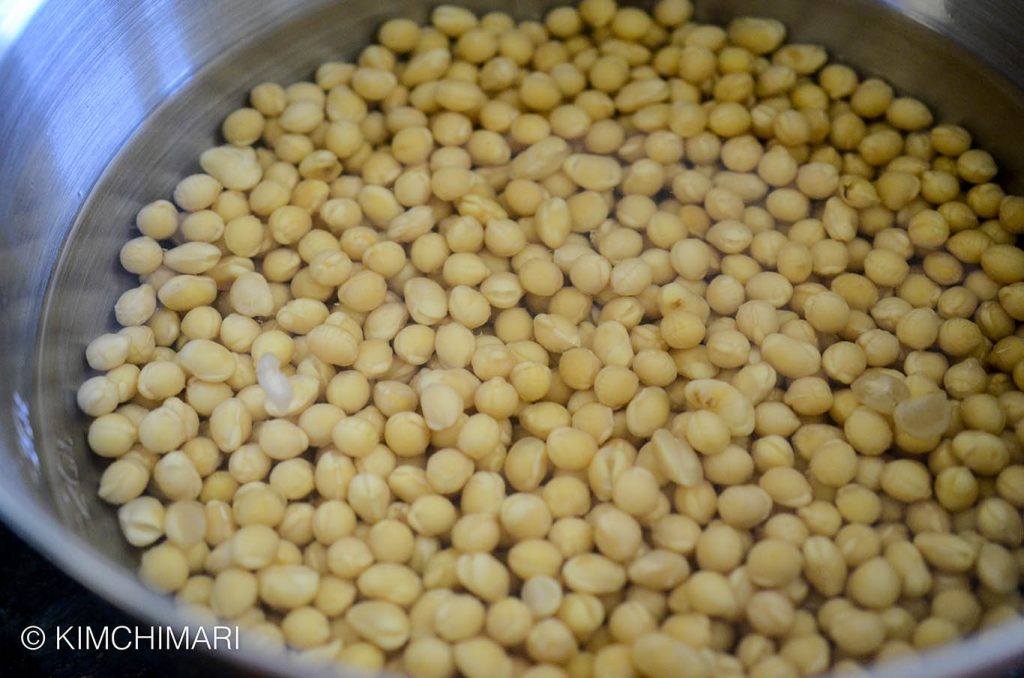
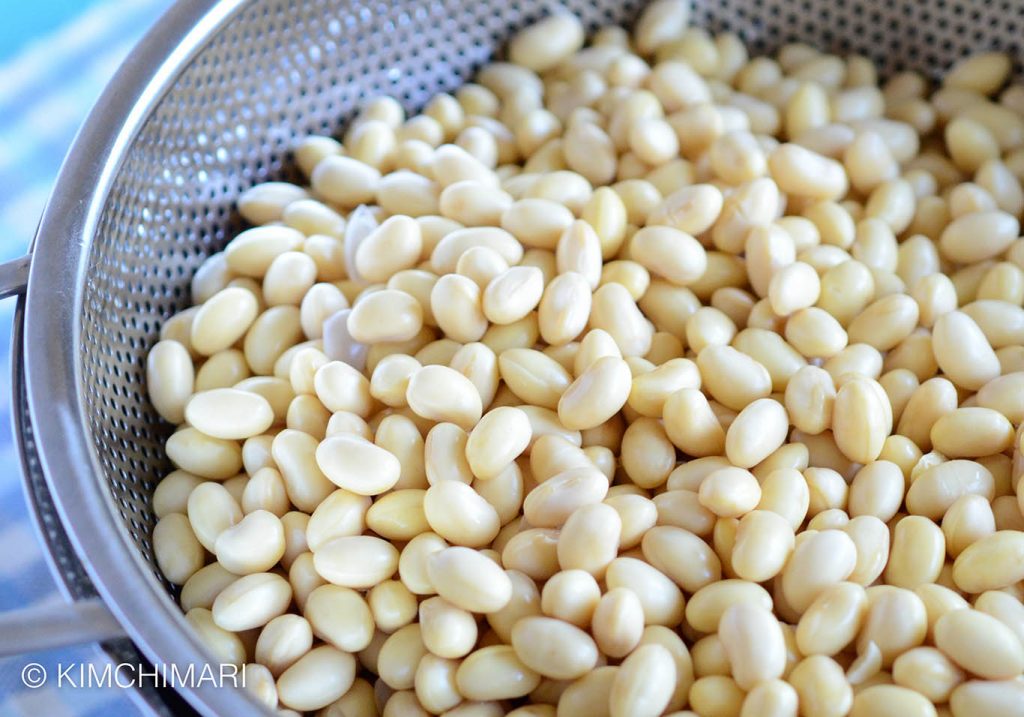
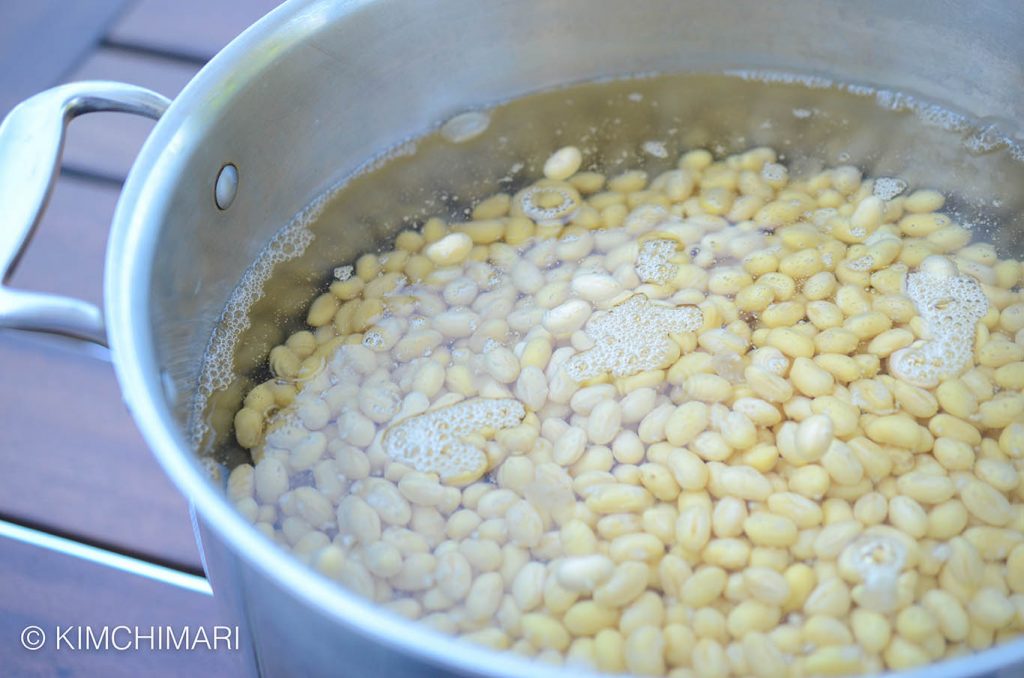
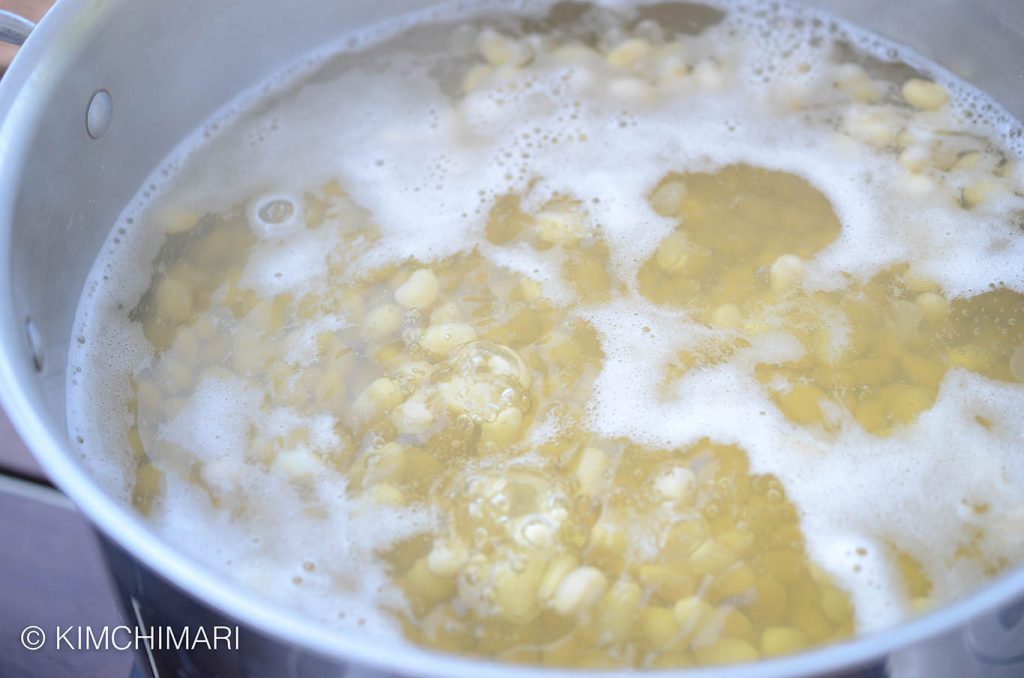
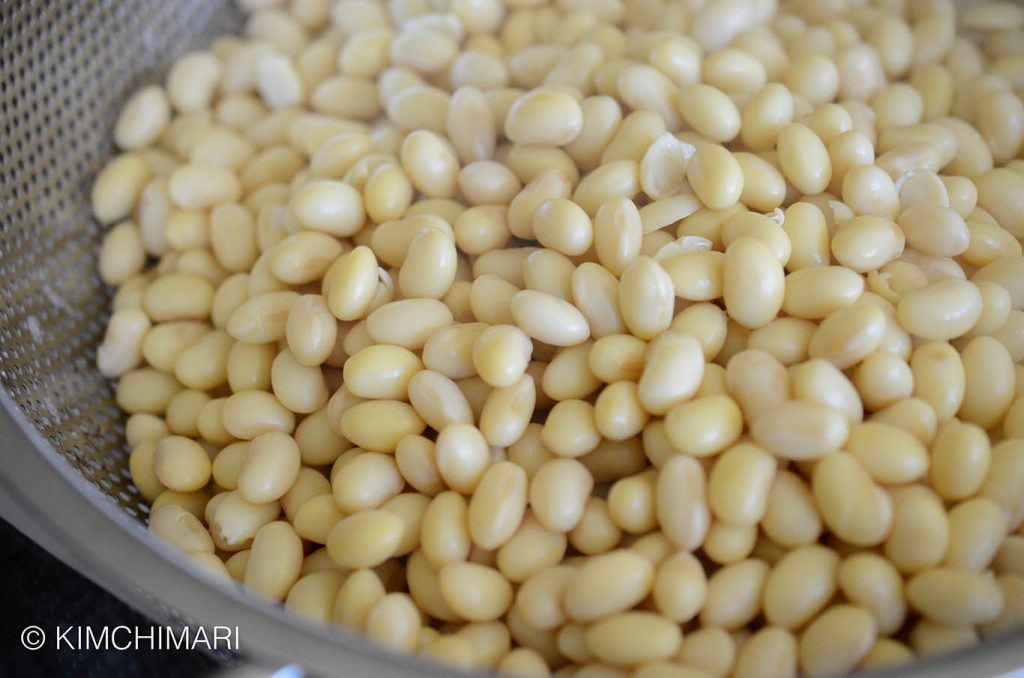
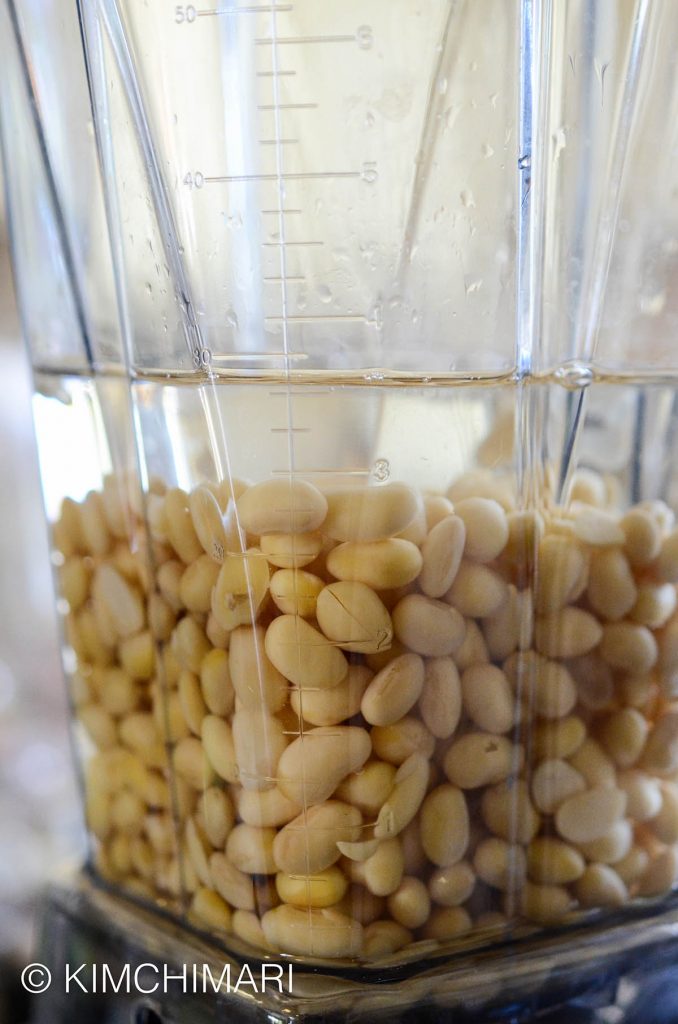
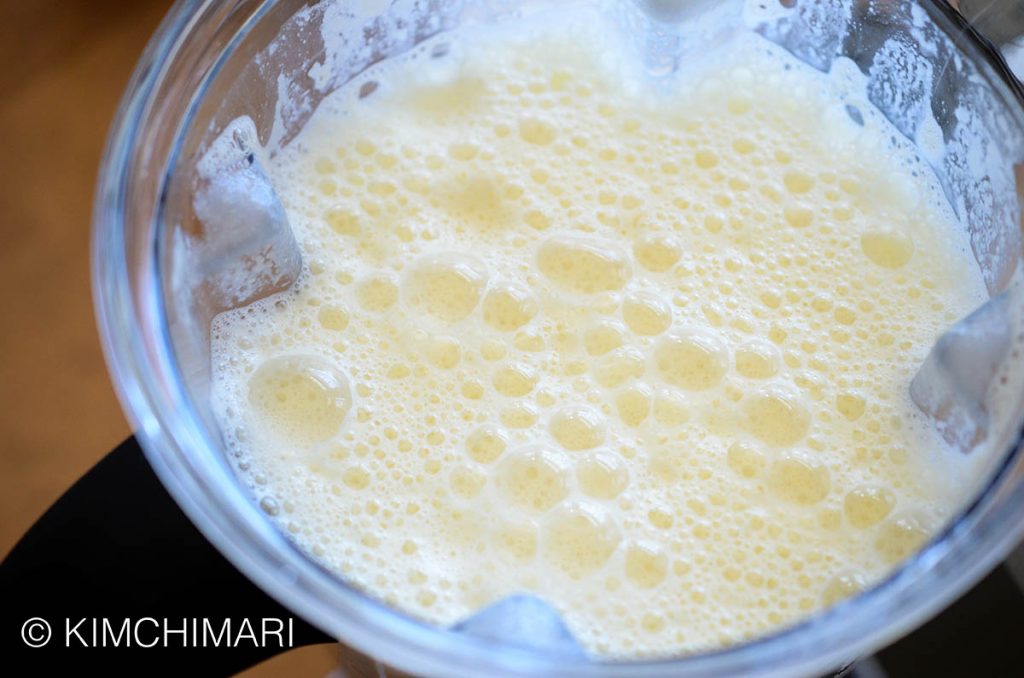
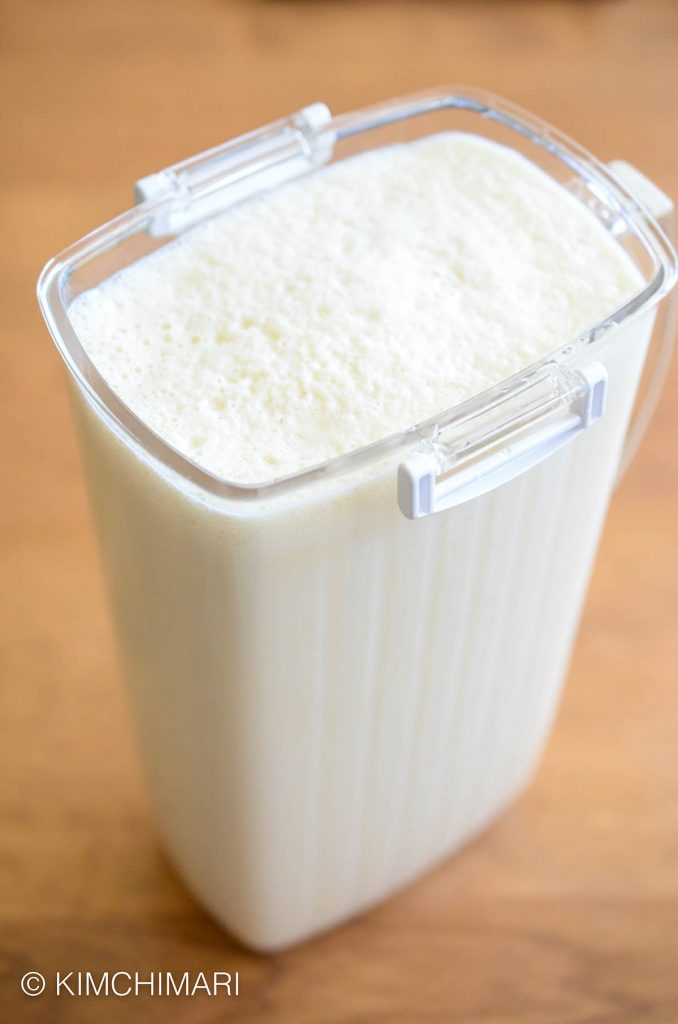
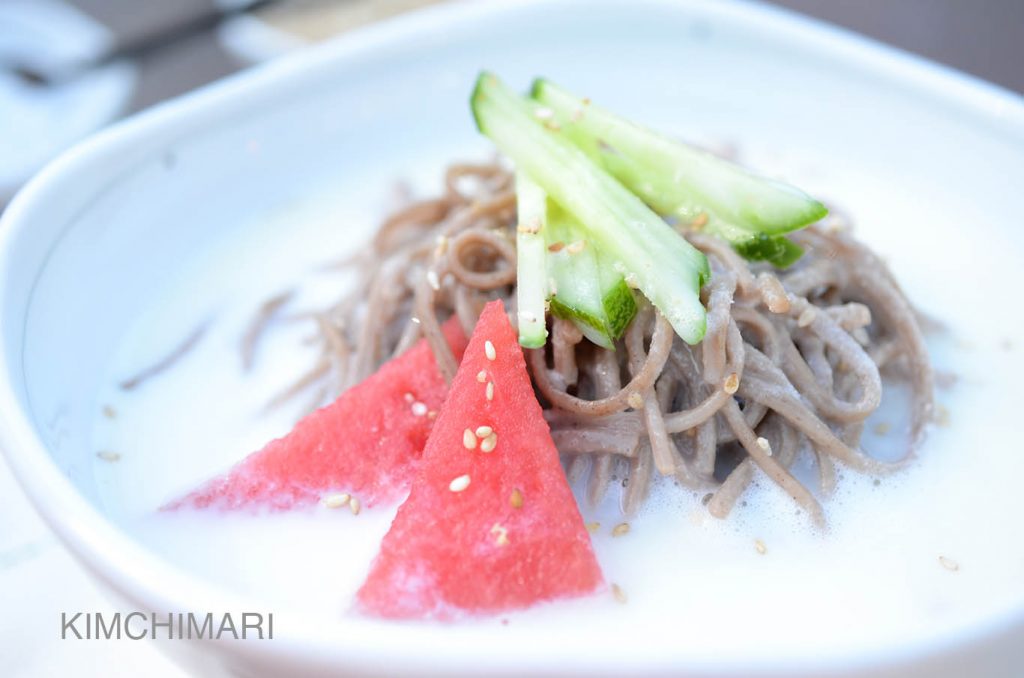
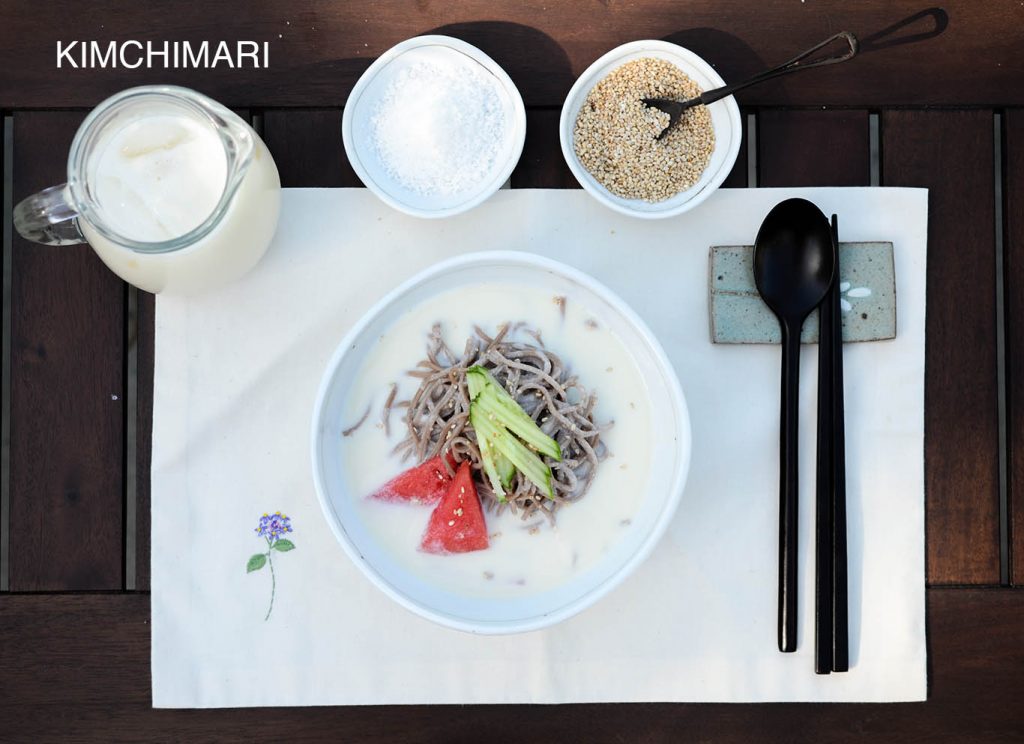
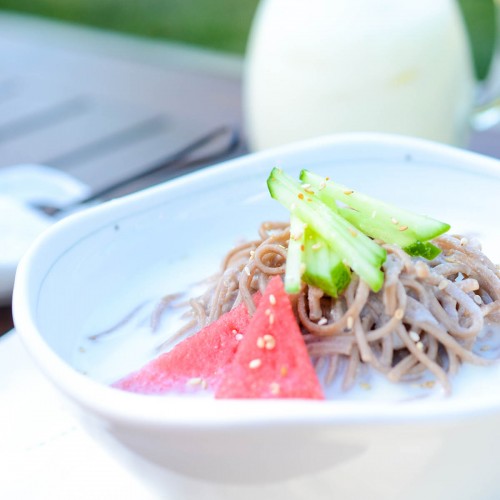
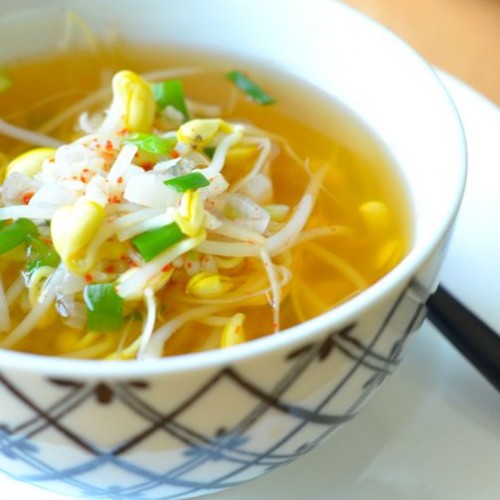
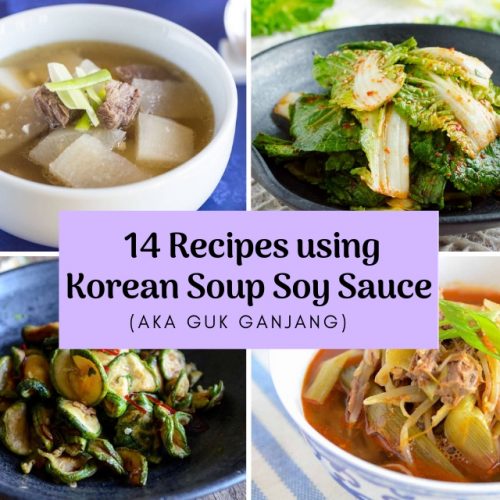

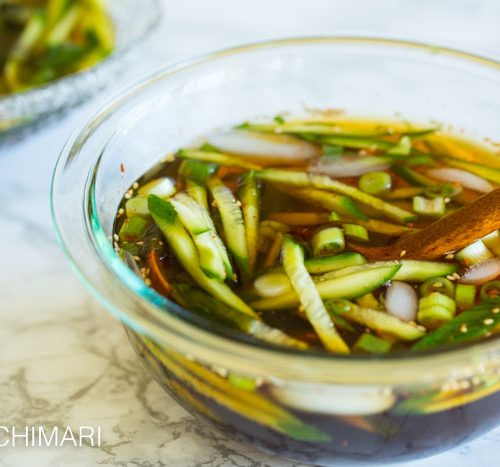
















Can out great ! Easy to follow instructions
Looks very tasty and refreshing! Do you strain soy milk before adding it to the soup?
It really is very very refreshing and yummy. We used to strain it in the old days when we didnt have powerful blenders. If you have a good blender there is no need. But if you want it perfectly smooth you can strain it – up to you. 🙂
Thanks for quick response! I will try it 🙂